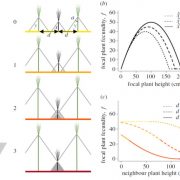
Farming plant cooperation in crops (Proc. R. Soc. B.)
If you want a great plant, select for a strong, vigorous, high-yielding individual; this is also the outcome of natural selection. But if you want a great field of plants, these traits may not be as suitable, because the plants will expend energy competing between themselves. When seeds from many plants…
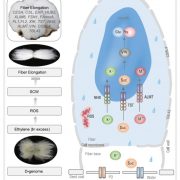
Review. Gossypium genomics: Trends, scope, and utilization for cotton improvement (Trends Plant Sci)
Cotton (Gossypium spp.) provides the world’s most important natural fiber, and I suspect with our growing realization of the problems with plastics there will be still more demand for it. Yang et al. review the current state of Gossypium genomics. As a crop that has been domesticated for millennia,…
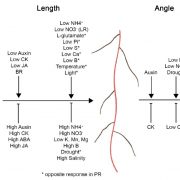
Review. Same, but different: growth responses of primary and lateral roots ($) (J. Exp. Bot.)
Lateral roots arising from programmed cell division from primary roots in both monocots and dicots share some similarities and dissimilarities in developmental signaling. In this review, Waidmann et al. discuss lateral root organogenesis and elongation with respect to hormone, nutrient, and abiotic conditions.…

Reciprocal cybrids reveal how organellar genomes affect plant phenotypes (Nature Plants)
A cybrid is a cytoplasmic hybrid; in other words, a cell or organism in which the cytosolic genomes (mitochondria and plastid) have a different origin than the nuclear genome; the nuclear genome is inherited solely from the paternal parent, and the cytosolic genomes from the maternal parent. Starting…
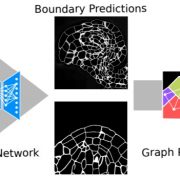
Accurate and versatile 3D segmentation of plant tissues at cellular resolution (bioRxiv)
Advances in microscopy allow biologists to document and understand phenotypic changes at the tissue level. Despite this advancement, analysis of microscopic images to characterize changes in phenotypes is still under development. In this paper, Wolny et al. have developed an image analysis tool PlantSeg…
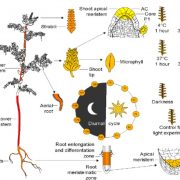
Expression atlas of Selaginella moellendorffii provides insights into the evolution of vasculature, secondary metabolism, and roots (Plant Cell)
Lycophytes, including the model species Selaginella moellendorffii, are extant (still alive today) seedless vascular plants that were particularly abundant around 400-300 million years ago (and major contributors to the formation of coal). To further understand the biology of some of these oldest extant…
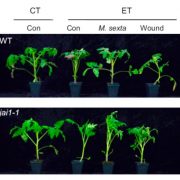
Insect herbivory antagonizes leaf cooling responses to elevated temperature in tomato (PNAS)
Plants have strategies to cool themselves when the temperature is hot. These include increasing their rate of transpirational cooling through stomatal opening and raising their leaves, which can enhance air flow. Previous studies have shown a role for the heat shock proteins (HSPs) and their cochaperone…
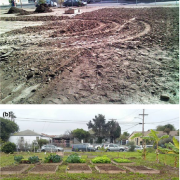
Monitoring and mitigation of toxic heavy metals and arsenic accumulation in food crops: A case study of an urban community garden (Plant Direct)
Urban gardens are a great way to introduce people to plant science, to bring fresh food into areas underserved by grocery stores (“food deserts”), and can promote a sense of community. But as Cooper et al. observe, many potential sites can be contaminated with heavy metals (lead, cadmium) and metalloids…
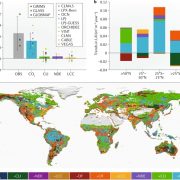
Review: Characteristics, drivers and feedbacks of global greening (Nat. Rev. Earth Environ.)
Whenever we talk about global trends there are of course local variations. Here, Piao et al. discuss recent trends of global greening, which is occurring at arctic as well as temperate and tropical regions. Overall, this greening is attributed to increasing atmospheric CO2, which promotes plant growth,…

